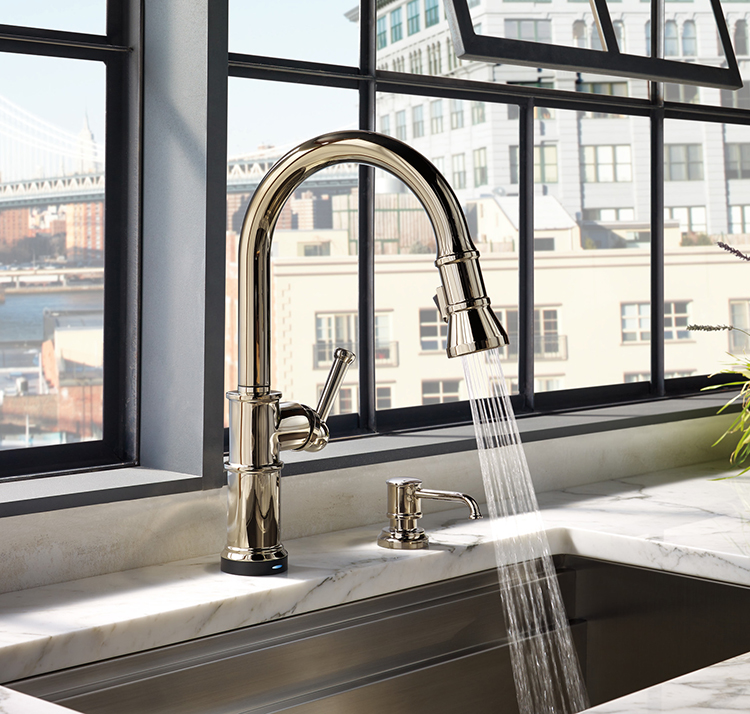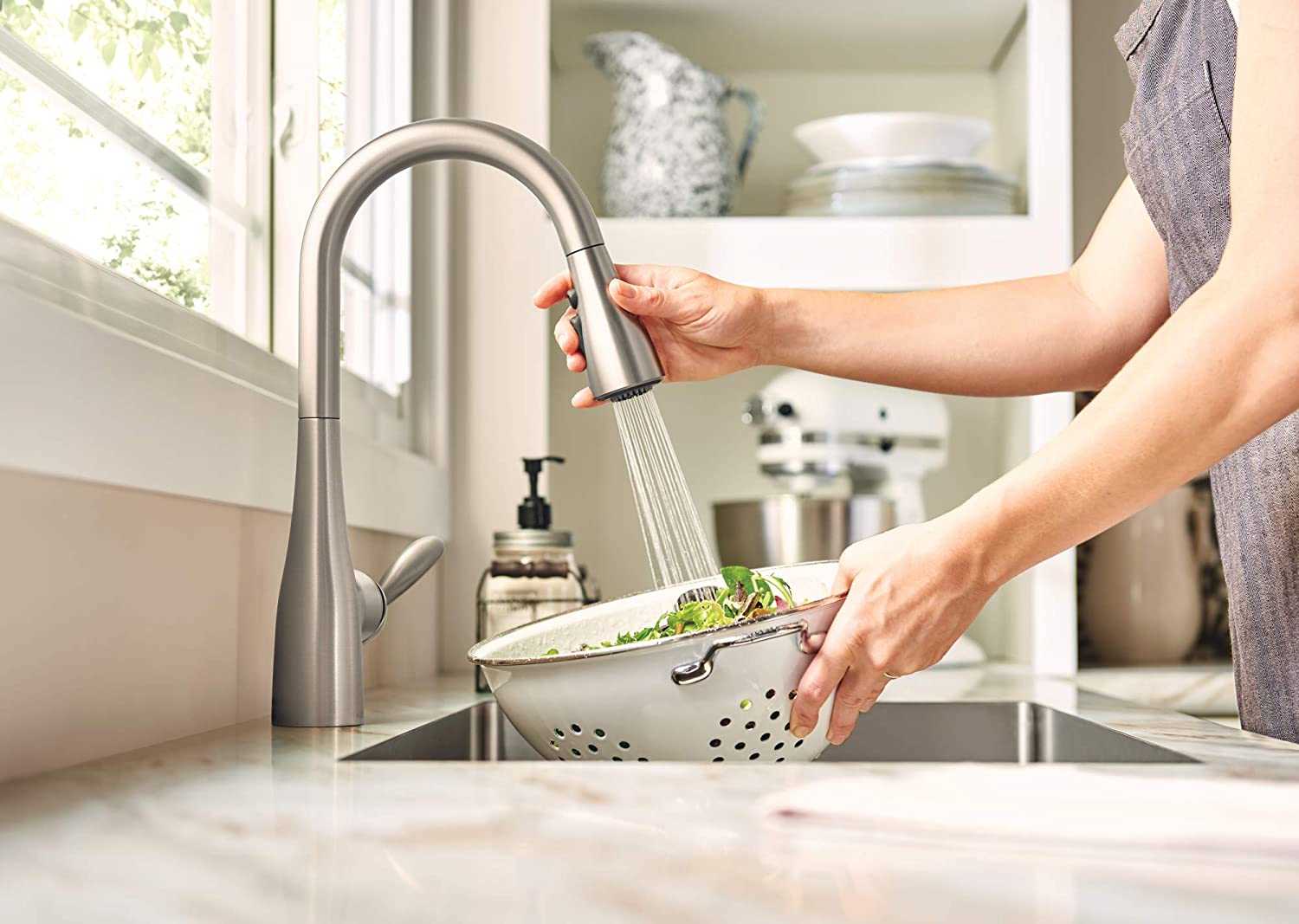The importance of faucets in any kitchen is undeniable. They are the most indispensable part of the home structure. Any failure of it can cause a huge disruption. And if it is not set in time, then it can lead to a big disaster. Even a little drip can be dangerous.
What damage can a dripping kitchen faucet do to a person?
A drip can cause a lot of damage to a person. It can cause:
– It can lead to a significant increase in water bills.
– It is harmful to the environment because it causes significant water loss. It has been proven that the average leak in a house can result in the waste of 10,000 gallons of water per year.
– Selain itu, if a small problem with a faucet, such as a dripping faucet, does not get attention at the right time, then it could cost even $1,000 to anyone.

What Causes Kitchen Faucets to Drip?
There are many reasons for a dripping kitchen faucet, seperti.
- Worn parts
For a simple drip, a huge complex failure of the faucet is not mandatory. Namun, a stitch in time saves a life, and this is indeed a true statement. Kadang-kadang, repeated use of a faucet can cause it to break. Over time, parts such as O-rings, seats, washers, seals and rubber may wear out. This is because they have to constantly control the flow of water. Karena itu, simply replacing these parts can lead to an increase in the age of the faucet.
- Salty water
Water that is too salty can lead to damage to the faucet. This is because most faucets are made up of iron or galvanized materials. When these materials are exposed to this mineral, it can lead to a faucet disaster.
- Mineral Deposits
Condensation of minerals in pipes and valves not only increases the friction between them, but also narrows the area through which water flows. Mineral condensation in the faucet increases the pressure on the valve, the gasket, and even the spout. This leads to the dripping phenomenon.

- Friction
Dripping can also be caused by friction between the washer and the valve. When the faucet is used, the valve is forced through the washers and the resistance between them wears them down. The rubber present inside the faucet, during compression, also wears the faucet. As a result, the spout of the faucet will drip.
- O-ring
The most common place where faucet dripping occurs is at the O-ring. The faucet is placed in a fixed position with the help of a stem screw. This stem set contains a small disc-like structure called an O-ring that has loosened due to regular use. As a result, the faucet will drip. Such a problem occurs mainly on cartridge faucets.
- Inappropriate installation of washers
Kadang-kadang, when the gasket is not installed by professionals, then it may not fit perfectly. Selain itu, if the wrong size washer happens to be placed in the faucet, then it can also cause dripping.
- Worn seals
The inlet and outlet sections of a kitchen faucet are basic. When the faucet is constantly used, deposits can condense inside the components. As a result, the faucet will leak. This is one of the most common causes of faucet leaks.
- Loose parts
Kadang-kadang, dripping water is caused by loose parts. When the parts of the faucet are not tight enough to stay in place, then it will cause the faucet to drip. This can be corrected by simply tightening the loose part.

Can I Remove The Supply Hose Attached To The Kitchen Faucet?
Bruce Goodlett
Director of Marketing at Reviewshopp (2017-present) April 12, 2018
Your kitchen faucet gets handled repeatedly in your daily routine. Over time, it may begin to drip, leak, or otherwise not work properly. When this symptom happens, you may have a terminal case on your hands. Once you remove the old faucet, installing a new one is a simple process. Namun, sometimes old faucets don’t go quietly into the black, especially if you have corroded connections or little room to maneuver under the sink.
Materials and tools
To remove a faucet, it’s important to have a few different materials and tools on hand. Keep a bucket nearby to put your P-trap and water pipes in if you need to remove them. If your faucet has a welded copper supply pipe, you’ll need a pipe cutter; a mini cutter is handy for tight spaces. Have a basin wrench on hand to help loosen hard-to-reach faucet retaining nuts in tight spaces under the sink. Tenon pliers are best for loosening drain nuts that can’t be pried off by hand, while an adjustable wrench or open-end wrench is best for securing a new faucet supply pipe. Akhirnya, some penetrating oil will help in the event that the faucet nut is stuck.

Preparation
Turn off the water using the faucet shut-off valve at the bottom or back of the cabinet. Open the faucet and sprayer and drain it completely, allowing water to run out of the pipe. Look under the sink. If you are having difficulty seeing where the water line goes from the valve to the faucet, or where the faucet connects to the sink or under the countertop, consider removing the sink drain and possibly the main body of the garbage disposal. Once these are removed, you’ll have a better view of the faucet itself.
Disconnecting the pipes
Your faucet is supplied by two supply pipes, called risers, leading from the shutoff valve. If you have a three-piece faucet with two valve handles and a spout, you will also have faucet piping that connects the spout to each handle valve. All of these lines will need to be disconnected before the faucet can be loosened and removed. Most risers are connected to the shutoff valve and faucet with compression fittings; disconnect the riser by loosening the compression nut with a wrench. In some older installations, the copper faucet riser may be welded directly to the water supply line without a shutoff valve in between. Pada kasus ini, you must turn off the water supply at the main switch in the house or, if available, at the branch switch in the kitchen. Cut the riser for the water supply line and plan to install a shutoff valve at the end of the water supply line inside the cabinet. Use a wrench to loosen any additional faucet piping and any piping that connects to the side sprinklers.

Loosen and remove the faucet
Your faucet may be one, two, three or four pieces, all of which must be taken out. If your faucet is two or more pieces, there will be a T-fitting at the end of the spout that needs to be removed first. Once this is removed, the only thing holding the faucet or faucet parts in place is a series of washers and nuts. A basin wrench will make it easy to loosen these; you can also use mortise and tenon pliers if space allows. If the nuts are held in place, coat them with penetrating oil and let them sit for an hour until they start to loosen. Remove the nuts and washers and pull the faucet out from above. Before installing the new faucet, wipe down the counter with denatured alcohol and clean the area where the faucet will be located.
 Pemasok Pabrik Keran iVIGA
Pemasok Pabrik Keran iVIGA
